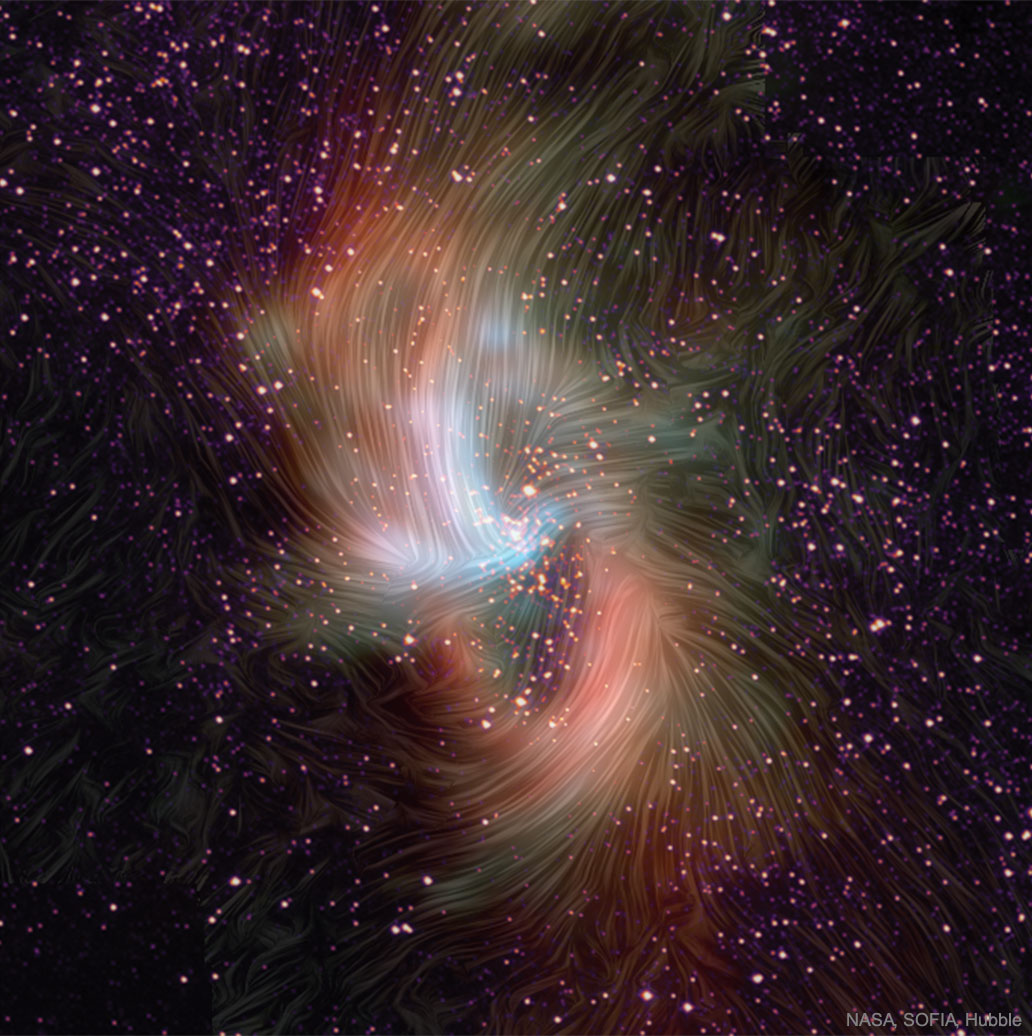2019 June 19
我们银河系中央的磁场
影像来源: NASA, SOFIA, Hubble
说明:我们银河系中央的磁场是什么样子的?为了找到答案,美国航天局的索菲亚平流层红外天文台(SOFIA)-一架由改装过的波音747搭载的望远镜-使用一种名为高分辨率机载宽带摄像机(HAWC+)的设备对中央区域进行了拍摄。HAWC+通过观察与局部磁场呈一致方向旋转的细长尘埃颗粒发出的红外偏振光来绘制磁力图。目前,位于我们银河系中央的是一个特大质量黑洞,它能吞噬最近被摧毁恒星所释放的气体。然而,与活跃星系中央黑洞的吸收率相比,我们银河系的黑洞相对比较安静。这幅特征影像提供了一个线索,关于为什么周围的磁场可能会将气体引入黑洞中,从而照亮黑洞的外部,或者迫使气体进入吸积盘保持停滞的状态,导致黑洞变得不太活跃,至少发现这样的状态是暂时的。仔细观察这幅特征影像,它看起来像是超现实艺术和引力天体物理学的结合,通过详细描述人马座A附近的尘埃环(我们银河系中央的黑洞)内部和周围磁场的细节,揭示了这条有效的线索。
Our Galaxy’s Magnetic Center
Image Credit: NASA, SOFIA, Hubble
Explanation: What’s the magnetic field like in the center of our Milky Way Galaxy? To help find out, NASA’s SOFIA — an observatory flying in a modified 747 — imaged the central region with an instrument known as HAWC+. HAWC+ maps magnetism by observing polarized infrared light emitted by elongated dust grains rotating in alignment with the local magnetic field. Now at our Milky Way’s center is a supermassive black hole with a hobby of absorbing gas from stars it has recently destroyed. Our galaxy’s black hole, though, is relatively quiet compared to the absorption rate of the central black holes in active galaxies. The featured image gives a clue as to why — a surrounding magnetic field may either channel gas into the black hole — which lights up its exterior, or forces gas into an accretion-disk holding pattern, causing it to be less active — at least temporarily. Inspection of the featured image — appearing perhaps like a surreal mashup of impasto art and gravitational astrophysics — brings out this telling clue by detailing the magnetic field in and around a dusty ring surrounding Sagittarius A*, the black hole in our Milky Way’s center.



